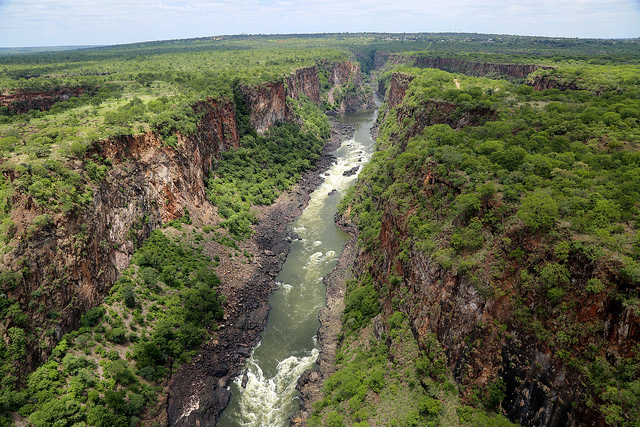Sustainable Agriculture in Zimbabwe
 The landlocked sub-Saharan nation of Zimbabwe once enjoyed a reputation as the “breadbasket of Africa,” but in just over a decade it went from being a major crop exporter to a recipient of international food aid. Under the authoritarian government of Robert Mugabe, smallholder agriculture was neglected by the state, and productivity plummeted. As the country suffered through years of economic crises, sustainable agriculture in Zimbabwe stagnated. Modern Zimbabwe can no longer provide its citizens with food staples, and more than 40 percent of infants suffer from chronic malnutrition.
The landlocked sub-Saharan nation of Zimbabwe once enjoyed a reputation as the “breadbasket of Africa,” but in just over a decade it went from being a major crop exporter to a recipient of international food aid. Under the authoritarian government of Robert Mugabe, smallholder agriculture was neglected by the state, and productivity plummeted. As the country suffered through years of economic crises, sustainable agriculture in Zimbabwe stagnated. Modern Zimbabwe can no longer provide its citizens with food staples, and more than 40 percent of infants suffer from chronic malnutrition.
Agricultural Productivity in Zimbabwe
Low agricultural productivity in Zimbabwe stems from a complex web of interrelated issues. Farming practices like slash and burn agriculture have degraded soils, as has an overdependence on pesticides and other chemicals. The lack of crop variety is problematic; when a family cultivates only one crop, such as corn or millet, they have no recourse when drought decimates the harvest.
Recent rainfall patterns have shifted from their historic schedules, rendering ancient knowledge obsolete. Rains can be overly abundant or followed by long dry periods of intense heat. Farmers lack access to infrastructure, new equipment, credit, markets and irrigation.
The Impact of Climate Change
Climate change is widely recognized as a serious impediment to food security and sustainable agriculture in Zimbabwe. As a result, the Food and Agriculture Organization of the U.N. FAO has included in their Zimbabwe projects a strong focus on climate change resilience.
It encourages resilient livestock production through improved feeding strategies, fodder crop production, animal husbandry and breeding practices. F.A.O. promotes climate-smart technology and farming systems such as greater crop diversity, crop rotation, irrigation, storage facilities and improved processing and preservation.
F.A.O. and the World Agroforestry Centre both endorse conservation agriculture, which uses mulch to conserve water, improve soil health and minimize runoff and erosion. It includes practices such as:
- Agroforestry
- Zero tillage
- Alley cropping
- Integrated pest management
- Organic farming
- Contour farming
- Crop and pasture rotation
Sustainable Agriculture in Zimbabwe Through Modern Cultivation Methods
In tandem with local partner Agricultural Partnership Trust, German aid organization Welthungerhilfe provides education, resources and community organizing to ensure better harvests for food security and surpluses for higher income.
Welthungerhilfe teaches modern cultivation methods using natural fertilizers and ecological plant protection to preserve soil health while improving yields. It instructs farmers on drought-resistant, climate-adapted crops such as peanuts, sweet potatoes and tomatoes. The organization also provides both chickens and training to help smallholders start chicken farms.
With Welthungerhilfe’s help, farmers gain access to grain stores for emergency use and protection against rodents. Welthungerhilfe encourages community, leading nutrition clubs and organizing farmers for marketing, better prices and improved credit access.
Across sub-Saharan Africa, both wildlife conservation and sustainable farming are becoming increasingly prevalent. Sustainable agriculture in Zimbabwe is intertwined with environmental and animal protection.
Farmers can benefit economically from efforts to save endangered species. For instance, the Rhino Conservation Trust uses the “horns and thorns” approach, paying farmers to manage and conserve local wildlife. It has funded sustainable agricultural practices such as protecting wildlife, conserving water, preventing deforestation and sequestering carbon in soil.
The good news is that people, animals and the environment can all benefit from sustainable agriculture in Zimbabwe. In the words of Raol du Toit, director of the Rhino Conservation Trust, the solution is to help farmers practice agriculture “in appropriate areas, using appropriate practices.”
– Anna Parker
Photo: Flickr
